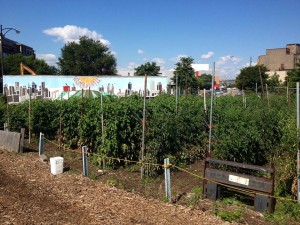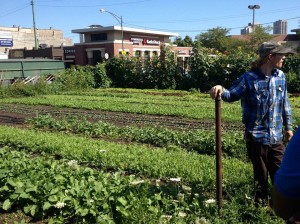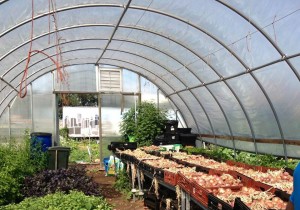 For the past few months, I’ve been writing for an organic farming company that produces all-natural nutritional supplements based in San Diego. Basically, this means that my days are spent sitting on a couch in front of a computer reading about productive things going on outside. I recently wrote an article about urban farming, and how cities are turning vacant lots into miniature farms to provide locally and sustainably-grown produce for city dwellers.
For the past few months, I’ve been writing for an organic farming company that produces all-natural nutritional supplements based in San Diego. Basically, this means that my days are spent sitting on a couch in front of a computer reading about productive things going on outside. I recently wrote an article about urban farming, and how cities are turning vacant lots into miniature farms to provide locally and sustainably-grown produce for city dwellers.
Although I grew up in Southern/Central Illinois with farmers in my family, I never had an interest in the business when I lived there. But my new line of work has piqued my interest in seeing what this urban farming business is all about on the other side of my laptop.
 I decided to volunteer at Chicago’s City Farm to see for myself. The organization turned a vacant lot at the corner of Clybourn and Division into a green space to provide organically-grown produce to local markets and restaurants. Lots of the city’s top restaurants attract environmentally-conscious diners because of labels like “locally grown” and “farm fresh.” If you see those labels at a restaurant in Chicago, there’s a good chance your produce was grown here.
I decided to volunteer at Chicago’s City Farm to see for myself. The organization turned a vacant lot at the corner of Clybourn and Division into a green space to provide organically-grown produce to local markets and restaurants. Lots of the city’s top restaurants attract environmentally-conscious diners because of labels like “locally grown” and “farm fresh.” If you see those labels at a restaurant in Chicago, there’s a good chance your produce was grown here.
 The group, One Brick, had actually organized a volunteer event on the day I decided to check out the farm, so there were about fifteen volunteers there to help out. The day began with a tour of the farm, to get everyone acquainted with the growing phases of the in-season vegetables and how the urban farmers maintained each crop.
The group, One Brick, had actually organized a volunteer event on the day I decided to check out the farm, so there were about fifteen volunteers there to help out. The day began with a tour of the farm, to get everyone acquainted with the growing phases of the in-season vegetables and how the urban farmers maintained each crop.
The volunteer work mostly consisted of picking the flowers off of basil plants and pulling weeds from the fences. Basil plants are harvested for their leaves, not their flowers, and the flowers steal the nutrients away from the parts people want to pay for and eat. The work was easy and mindless, allowing volunteers to strike up small talk with each other as they picked. My hands smelled like delicious basil even after several washes and a shower!
 The outer fence bearing the City Farm sign had become tangled in weeds that blocked sunlight from the crop and created a less-than-attractive appearance. The coordinator gave us each a pair of gloves and a couple wheelbarrows to pull and discard the weeks. The work wasn’t glamorous, but it needed to be done, and that’s farming for you.
The outer fence bearing the City Farm sign had become tangled in weeds that blocked sunlight from the crop and created a less-than-attractive appearance. The coordinator gave us each a pair of gloves and a couple wheelbarrows to pull and discard the weeks. The work wasn’t glamorous, but it needed to be done, and that’s farming for you.
The folks at One Brick were really welcoming and I’ve since signed up on their mailing list to see what other similar events I could learn about through them. It seems to be a really casual, non-committal way to volunteer, usually ending in a restaurant or bar stop. But you can stop by City Farm on your own to volunteer as well: Wednesday and Saturdays at the Clybourn Farm and Saturdays and Sundays at the Perry Street Location.
 I suppose since I showed up in the middle of August, the crops needed more maintenance than anything else. It felt therapeutic to get up early on a Saturday morning, bike to a farm, get my hands dirty, and feel a little sore biking home at the end of the day. It also felt right to split my work time between the computer and the field.
I suppose since I showed up in the middle of August, the crops needed more maintenance than anything else. It felt therapeutic to get up early on a Saturday morning, bike to a farm, get my hands dirty, and feel a little sore biking home at the end of the day. It also felt right to split my work time between the computer and the field.
My research has led me to several other urban farms throughout the city including Urban Habitat Chicago, Chicago Lights, and Growing Power. If any of you have an experience working on an urban farm (positive or negative, Chicago or elsewhere) I’d love to hear from you and get more involved.
